How to Select and Check
the Installation of
Asphalt Roof Shingles
About half of the houses built in the United States are roofed with asphalt shingles, according to the Environmental Protection Agency.
Asphalt shingles are less expensive than metal, clay tile or slate – sometimes much less. They are fairly easy to handle, easy to install, easy to repair and readily available almost anywhere. Generally, if someone knows that water runs downhill, he already grasps many of the principles involved in installing these roofs.
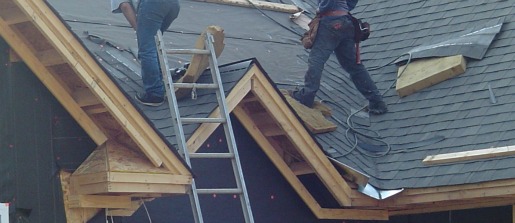
Installing with closed valleys.
What's the difference between "3-tab" and "architectural"?
3-tab shingles are just that – the edge that is left exposed consists of three equal sections with a slot between each set of tabs. These are made of a single layer of material, of uniform thickness, giving a uniform flat appearance.
“Architectural shingles,” or laminated shingles, are made of several layers of material laminated over each other to create a varying texture when installed. They are heavier and thicker, last longer, are more expensive, and have a longer warranty.
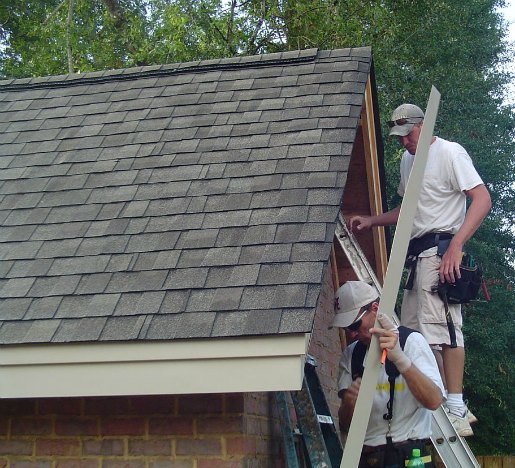
Ridge vent and prefinished aluminum fascia
Picking the style and color: Do this the same way you would select brick – find a house that has a shingle you really like, and find out what it is. Picking your roof color and type from the sample boards in the hardware store is a terrible way to make a selection. When you discover that the roofing you picked in the store doesn't look like you expected it would, when about ¼ of it is already nailed on the house, what will you do?
An advantage of using a larger established roofing company is that they can give you addresses of houses they recently roofed that have the brand, style and color you may want. You can put your eyes on someone else's roof, and decide if it's the roof you want.
What's the best way to get my house roofed?
First, someone has to buy the shingles, nails (usually gun nails) and flashing. On a new house, the framer probably will have tacked on the roofing felt, so you won't need to buy that. We bought our own materials from a roofing supply company on the first two houses we built, and paid someone to roof the houses. Both installations turned out great, but we prefer to use a roofing company that furnishes all the materials as part of the job. We only pay for the materials that are installed, and never have to worry about getting returns on leftover shingles. The price we pay either way is comparable.
Second, someone has to nail it all on. Having used a small crew of independent guys (as small as two) as well as a larger established company with more equipment and resources, we prefer the larger group. Hey, when a problem surfaces later, it's great to have a good company that you can actually get on the phone, and that will be happy to come back to take care of any problems.
The fascia makes all the difference: The "fascia," or "facia," is the horizontal band that runs around the outer edge of the roof overhang. If you plan to have aluminum fascia coverings, or similar, the framer should run 2x6's or 2x8' around the house. The roofing can be installed first, and the aluminum fascia cladding can be installed later. In this case, as soon as the framing is done, you can begin the roofing installation.
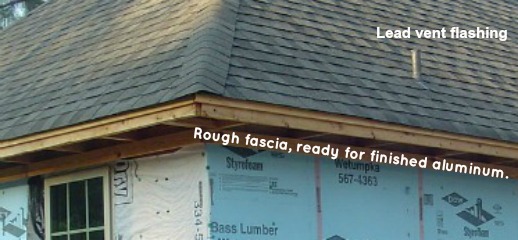
If you plan to have painted fascia, made of wood or fiber cement (Hardie brand is an example), the fascia materials must be completely installed first, then the shingles installed. Finished fascia is usually installed by a different subcontractor than the framer. See the photo below.
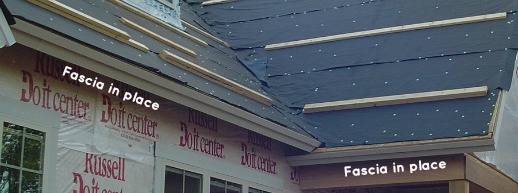
The way drip edge trim or other trim shapes are used along the upper edge of the fascia can completely change the edge where the shingles start. There's no way the roofer can tell how far to hang over the first row of shingles if the fascia trim isn't finished before he starts his work. Finished paintable fascia needs to be scheduled to go on as soon as possible after the framing is done, because you can't put on the roof until the fascia is completed.
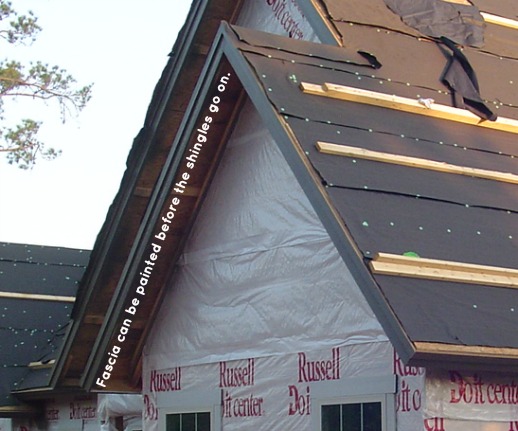
A caution about using ridge vents: The caution – the framer will need to know if you are using ridge vents, because the roof deck will need to be installed at the ridge with an air space along the ridge. Decide ahead of time. The long crack can be sawn if it's not put in when framed – it's just harder to do. If you have an attic that needs to be ventilated, ridge vents can be part of an effective solution.
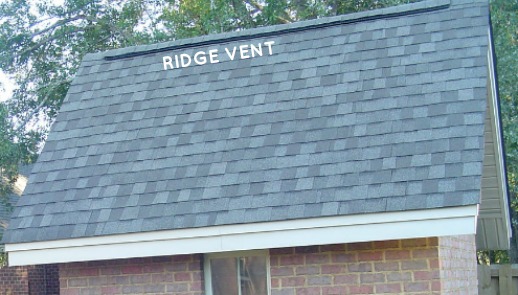
Plumbing vent flashing: Here's where someone will try to “cheap out.” The plastic flashing boots that go around plumbing vents that stick up through the roof are really cheap (inexpensive). Your plumber may even furnish them to you as part of his work.
Do like we do - pay the extra $30 or so each for lead pipe flashing, 3 or 4 on most roofs. Compare that price for this permanent flashing with the long term cost of the cheap plastic flashing that will shrink and crack where it "seals" around the vent pipe (translation – LEAK, often inside a wall where you won't see it for months). And don't let the roofer convince you that the plastic boots are fine or better, because they are not. The pvc vent pipes are not intended to be exposed to sunlight, so the lead flashing covers them. The plastic boots do not.
If available in your area, buy the lead pipe flashings that have the larger skirt that goes around the pipe. They work much better on steeper roof slopes that are common today. In our area, they are sometimes known as "Montgomery" flashing.
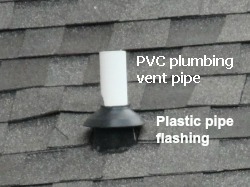
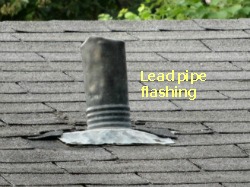
What about squirrels? We've read stories and seen pictures of lead pipe flashings that have been gnawed up by squirrels. We believe it, but have never had that problem. One idea is to keep the squirrels off the roof. If they're getting on it, take action to keep the destructive critters off.
Getting the roof on is a major milestone in your home building project. You're finally dry inside when the rain falls! Now you can move ahead with interior work that is ruined if it gets wet.
Do your homework, and make good decisions that are right for you and your family.
Susan and I wish you the very best with the building of the home of your dreams!
Sincerely,
Vic Hunt
Go to Splatter page, to prevent staining mud splatter on walls.
Return from Shingles page to Framing page.






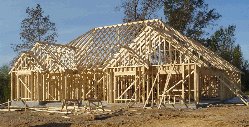
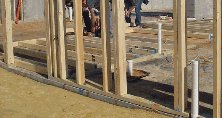
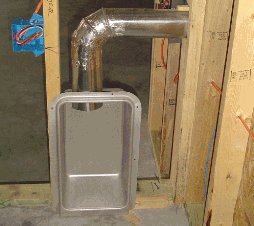
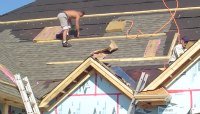
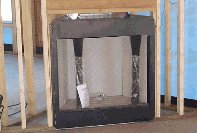

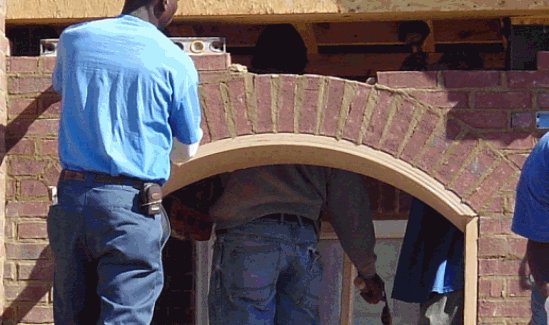
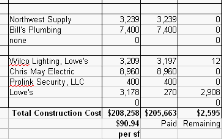
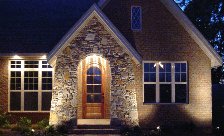
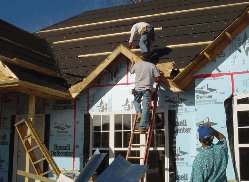


Comments
Have your say about what you just read! Leave us a comment or question in the box below.